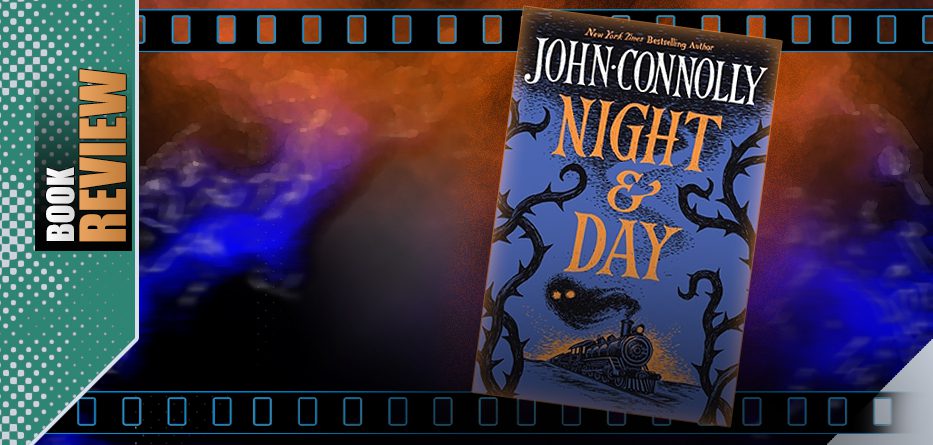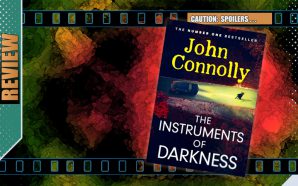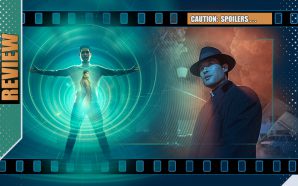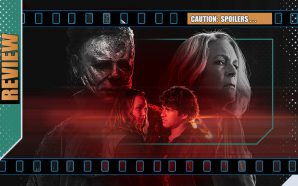Those awaiting more dark and twisted tales of troubled detective Charlie Parker will have to wait until 2025 (and the forthcoming novel The Children of Eve) but in the meantime author John Connolly brings together an anthology of the bizarre and strange and an additional essay in Night and Day.
It’s an interesting mix, reminiscent of Connolly’s Nocturnes collections and perhaps less concerned with mainstream commerciality and more with the kind of timeless undiscovered countries which Connolly likes to map and where he now gives himself free rein. Many are not contemporary tales, with the author flitting between centuries but seemingly more comfortable the further away from modern times he treads.
Reflecting the author’s unapologetic love for annotated history and lost literature, it’s suitable that it begins with The Pilgrims’ Progress: A Tale of the Caxton Private Lending Library & Book Depository reading very much like a quirky, historic parable as various fictional characters (initially from Chaucer’s Canterbury Tales, though a later tale brings in more) start to come to life and are drawn together, much to the concern of the local church of the 1400s. It’s as if Douglas Adams took an ecumenical rather than extra-terrestrial journey with plenty of wry humour and observations about the nature of life and the human condition as early-day printers and middle-management holy men fret about the nature of the strange appearances, the fact that all the characters appear to be fictitious and the implications it may have on who may turn up next and what to do with them. It’s suitable that we return for another tale from within the Lending Library’s walls later in the collection. And all the Graves of all the Ghosts and The Evenings with Evans both evoke a feeling of M R James, with the former feeling like a brief interlude or premise for a film, but not having an exact beginning nor end – more concerned with permeating a sense of dread throughout.
Ultimately, Connolly’s Night and Day feels less like a set of complete short stories and more a tome-full of test-run tales, interludes, anecdotes and train-of-thought tasters for bigger banquets. without the baggage of a long-running series but with distinct reverential influences. But that’s not to say that in this run up to Hallowe’en, they aren’t a tasty and sinister smorgasbord, especially when viewed as collective examples of askew nostalgia – for the things that were and might have been…
Abelman’s Line deals with both the past and the future, or – to be more accurate – possible pasts and futures and here Connolly shifts into MCU, Michael Crichton or even Ursula K. Le Guin (The Lathe of Heaven) territory as he explores his take on a multiverse in which a team from the future meddles with the fate of an elderly Nazi. Or will do. Or has done. Feeling less like a pacy Quantum Leap and more like the darker The Lazarus Project, it’s smart (perhaps too overtly smart?) and even dealing with science-fiction rather than gothic horror, Connolly knows how to bind words, facts, concepts and inner voices together. However, once again, it feels like a snippet of a story, this time dressed in the clothing of a technical manual. It leaves you with many questions and would be interesting to read a longer story based on the concept or the plan. Or the concept of a plan.
The Mire at Fox Tor is a slight but unnerving tale of an ill-fated walk across a desolate but not empty moor and The Bear is a sweeter tale than expected regarding an unexpected furry visitor to a Kerry farm in Ireland. The Flaw and its tale of a painting that too closely echoes the world outside a cottage window (or vice versa?) owes more than a little to MR James’ The Mezzotint.
Our Friend Carlton begins like that classic British film Shallow Grave with the disposal of a room-mate, temporary, though it turns out to be… though it becomes more darkly humorous as it goes on, a shrugged sense of witching-hour whimsy.
Marketed as ‘a shivery collection of supernatural tales…‘, it’s a little surprising to find that over half the 350-page book is then devoted to an essay on (and an appreciation of) the 1972 film Horror Express and an expansion of Connolly’s original essay on the subject. The film, directed by Eugenio Martín, is caught between an obscure production and a genre classic for discerning horror aficionados, but it might not be the best known or obvious entry on which to devote so much space and it initially feels like a change to the reason d’etre of the book. The film itself starred industry greats Peter Cushing, Christopher Lee and Telly Savalas and tells of passengers aboard a train crossing Siberia, where an anthropologist and his rival must contend with the danger of a prehistoric ape which turns out to be the host for a parasitic life-form. (Ain’t that the way?).
 But in truth, the extended monograph is less an appreciation Horror Express but more a contemplation of nostalgia itself. Connolly uses the opportunity to examine not just how (and with whom) the film was made, but why the feature made an impression on him – as a young child in Ireland – that he never fully realised until much later… and how seeing the film and remembering it again brought to mind the very idea of what nostalgia is and can be for an individual, especially in relation to his relationship with his father. Fans of Peter Cushing will like the attention and detail that Connolly gives to that contribution to the film and the actor’s legacy. Horror Express was made shortly after Cushing’s beloved wife Helen died of emphysema in 1971 and the actor was distraught, never fully recovering the loss of someone who had given him so much support and confidence. Cushing really didn’t want to do Horror Express (or any film for that matter) but it was his old friend Christopher Lee that encouraged him to honour his contract. Connolly dissects the production of the film but also how it combined with the author’s love of Mr James to solidify his interest in the mysterious and the unsettling elements that surround the best stories.
But in truth, the extended monograph is less an appreciation Horror Express but more a contemplation of nostalgia itself. Connolly uses the opportunity to examine not just how (and with whom) the film was made, but why the feature made an impression on him – as a young child in Ireland – that he never fully realised until much later… and how seeing the film and remembering it again brought to mind the very idea of what nostalgia is and can be for an individual, especially in relation to his relationship with his father. Fans of Peter Cushing will like the attention and detail that Connolly gives to that contribution to the film and the actor’s legacy. Horror Express was made shortly after Cushing’s beloved wife Helen died of emphysema in 1971 and the actor was distraught, never fully recovering the loss of someone who had given him so much support and confidence. Cushing really didn’t want to do Horror Express (or any film for that matter) but it was his old friend Christopher Lee that encouraged him to honour his contract. Connolly dissects the production of the film but also how it combined with the author’s love of Mr James to solidify his interest in the mysterious and the unsettling elements that surround the best stories.
Ultimately, Connolly’s Night and Day feels less like a set of complete short stories and more a tome-full of test-run tales, interludes, glimpses, anecdotes and of train (express?)-of-thought tasters for bigger banquets. without the baggage of a long-running series but with distinct reverential influences. But that’s not to say that in this run up to Hallowe’en, they aren’t a tasty and sinister smorgasbord, especially when viewed as collective examples of askew nostalgia – for the things that were and might have been.
Night & Day, by John Connolly, is published in the UK on 31st October by Hodder and Stoughton. It is available, a few days earlier on 22nd October in the United States and Canada; October 29 in Ireland, Australia and New Zealand.
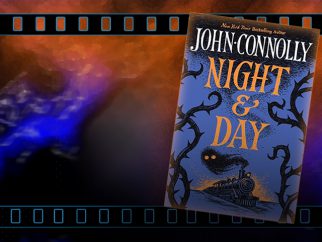
- Stories8

